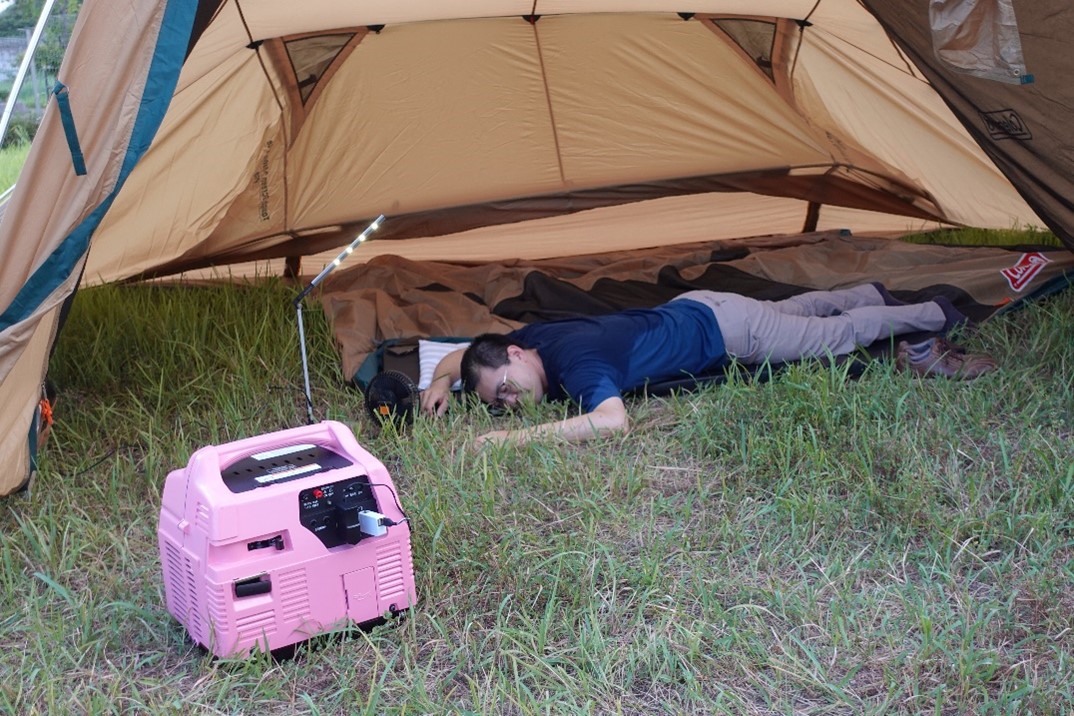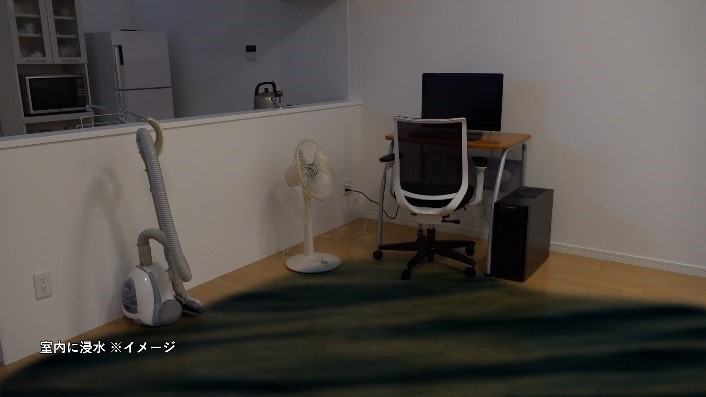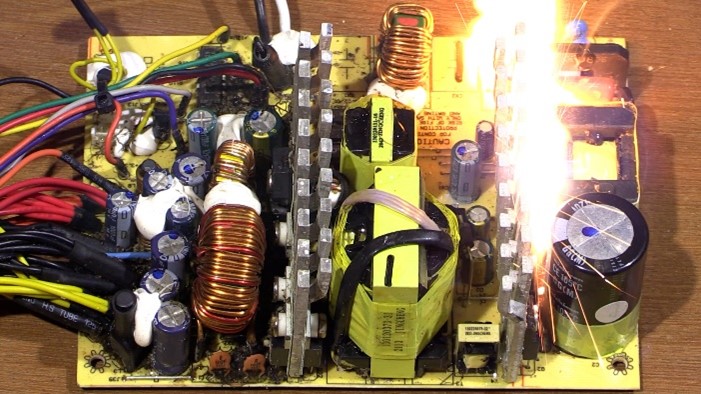- Home
- News Releases
- Back Issues
- August FY2023
- Beware of Carbon Monoxide Poisoning Caused by Portable Generators during Power Outages and Fire Caused by Power Restoration
Beware of Carbon Monoxide Poisoning Caused by Portable Generators during Power Outages and Fire Caused by Power Restoration
Prevent product accidents triggered by disasters
August 29, 2023
Joint Press Release with the Consumer Affairs Agency and the National Institute of Technology and Evaluation (NITE)
September 1st is Disaster Prevention Day. Every year, accidents are reported involving carbon monoxide poisoning caused by insufficient ventilation of exhaust gas from portable generators, equipment which are often used during power outages due to typhoons and other natural disasters. In addition, it is necessary to beware of fire caused by power restoration after power outages. The Ministry of Economy, Trade and Industry (METI) hereby requests consumers to take measures to prevent such accidents.
If any natural disaster occurs, you may face a product accident triggered by the disaster, not to mention the damage caused by the disaster itself.
A growing number of households have a portable generator as an emergency power source in case of a prolonged power outage caused by a disaster. Meanwhile, as exhaust gas from portable generators contain highly toxic carbon monoxide, fatal accidents have been reported that were caused by such generators used indoors or in a place with poor ventilation.
Moreover, product accidents are also reported involving power restoration after power outages, causing electric heating appliances in contact with surrounding combustible materials to start a fire or home appliances submerged in a flood or their damaged components to short-circuit and ignite.
METI requests consumers to follow the points to note below for safe use of such generators.

In a case where a consumer uses a portable generator near the entrance of a tent
Points to note in using a portable generator
- Never use a portable generator indoors. Exhaust gas from the product in operation contains carbon monoxide, which may cause carbon monoxide poisoning if you use the generator indoors.
- Even outdoors, using a portable generator inside a car or tent would cause the risk of poisoning at a level equivalent to or higher than indoors. Make sure to use such a generator in a well-ventilated place away from any openings of a car or tent, such as an entrance or window, in order for the exhaust gas not to flow into the car or tent.
Reference: Examples of the accidents caused by portable generators
(1) Date of the accident: September 8, 2018 (one male in his 50s dead in Hokkaido Prefecture)
Note
This accident occurred after the 2018 Hokkaido Eastern Iburi Earthquake.
Details of the accident
A man died of carbon monoxide poisoning, and a portable generator for household use was found at the scene.
Cause of the accident
The instruction manual of the product stated, “Do not use in a place where exhaust gas may be trapped because of the risk of exhaust gas poisoning. Exhaust gas contains toxic components, such as carbon monoxide.” It was estimated that, in spite of the instructions, the user might have operated the generator indoors with insufficient ventilation during the power outage, which might have caused the exhaust gas to become trapped and increased the concentration level of carbon monoxide, leading to this accident.
(2) Date of the accident: September 7, 2020 (one person dead and two people in a serious condition in Kagoshima Prefecture)
Note
This accident occurred after Typhoon No.10 in 2020.
Details of the accident
One person died of carbon monoxide poisoning and two people became seriously ill, and a portable generator for household use was found at the scene.
Cause of the accident
As no malfunction was found in the product in question, it was presumed that the user might have operated the product indoors with insufficient ventilation, which might have led to the concentration of carbon monoxide indoors, causing the user to have carbon monoxide poisoning. In addition, the instructions written on the product itself and in the instruction manual stated, “There is a risk of exhaust gas poisoning,” and, “Do not use the product indoors or in a place with poor ventilation.”
(3) Date of the accident: August 2, 2021 (one person dead in Fukui Prefecture)
Details of the accident
One person died of carbon monoxide poisoning after using a portable generator inside a car.
Cause of the accident
The user suffered a heat stroke while working outdoors. He then rested inside a car equipped with the product in operation, and his condition became worse. He was hospitalized but died the following day. The instruction manual of the product stated, “Exhaust gas from the engine contains components harmful to the human body. Do not operate the product in a tunnel, indoors, or in other poorly ventilated places. When operating the product, ensure sufficient ventilation by using a ventilator or other means. Otherwise, you may suffer from oxygen deficiency or serious poisoning, fatal in some cases.”


After a home appliance becomes wet due to a flood, some water or foreign matters such as mud and salt may remain or stick inside the product. This may cause the electric circuit board of the product to ignite when electricity is restored after a power outage.
Points to note regarding fire caused by energization
- If you can spare some time before evacuating your home, turn off the circuit breaker of the distribution board to prevent any fire that may occur due to home appliance with damaged parts after power restoration from the power outage. In normal times, make sure to check the location of the distribution board and how to operate it regularly.
- In particular, unplug electric heating appliances, such as electric cooking stoves with a built-in heater and electric heaters, from power outlets during a power outage in order to prevent fire that may be caused by the unintended operation of such appliances after power restoration.
- After the power is restored and when you use home appliances that have not been damaged by a flood or lightning, check for any abnormalities in the appearance of the appliances (e.g., damage to the power plug or cord, scorch mark on the product). If no damage is found, then turn on the breaker of the distribution board, plug each appliance into the power outlet one by one, and check the conditions of the appliances before normal use. If you notice any abnormal noise or odor from an appliance, immediately stop using it and contact the manufacturer or distributor of the product.
Reference: Case examples of fire caused by energization
(1) Date of the accident: July 3, 2016 (one male in his 20s in Hyogo Prefecture; extended damage)
Details of the accident
After the power was restored following a power outage, a fire started, causing an electrical product on the electrical cooking stove to ignite and become damaged.
Cause of the accident
Prior to the power outage caused by lightning, the product in question was in a state in which the main switch was turned on with the auto-off function working. It was presumed that the auto-off function might have been reset during the power outage and that the heater of the product might have restarted operation following power restoration, causing another electrical product placed on the electrical cooking stove to ignite and become damaged. The instructions written in the instruction manual and on the product itself stated, “Do not place any combustible materials on the heater of the product. After use, make sure that the heat adjustment knob is turned to the OFF position.
(2) Date of the accident: May 26, 2020 (fire in Tokyo; extended damage)
Details of the accident
After the power was restored following a power outage, a fire started, causing an electrical heater and its surroundings to ignite and become damaged.
Cause of the accident
Prior to the power outage, the product in question was in a state in which the plug was connected to a power outlet, the main switch was turned on with the auto-off function working. It was presumed that the timer of the product might have been reset during the power outage, and that the heater of the product might have restarted operation following power restoration after the power outage, causing the product to start igniting nearby combustible materials, which led to a fire. The instruction manual stated, “Unplug the product from the power outlet when not in use in order to prevent an electric shock and a fire that may be caused by insulation deterioration.”
Divisions in Charge
Product Accident Information and Analysis Office, Product Safety Division, Industrial and Product Safety Policy Group
Consumer Safety Division, Consumer Affairs Agency
Product Safety and Public Relations Division, Product Safety Center, National Institute of Technology and Evaluation